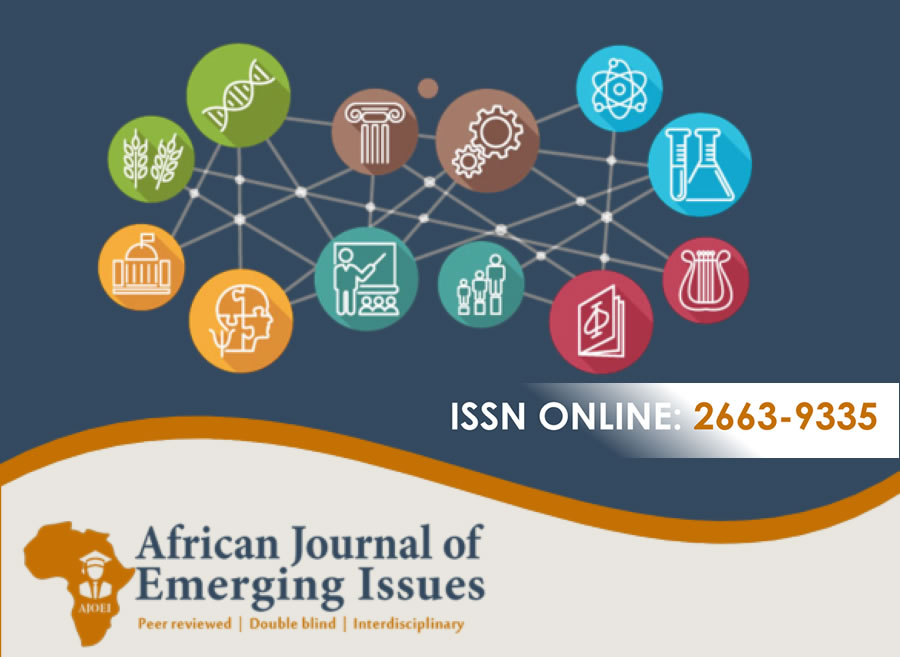THE MEDIATING EFFECT OF COMPETITIVE ADVANTAGE BETWEEN COMPETITIVE STRATEGIES AND PERFORMANCE OF ACCREDITED UNIVERSITIES IN KENYA
Abstract
Research Objective: The objective of this research was to examine the mediating effect of competitive advantage in the relationship between competitive strategies and performance of accredited universities in Kenya.
Research Methodology: The study was anchored on Industrial organization theory basing on structure conduct paradigm, advanced by Porter (1986). Positivism provided the philosophical foundation. The population of the research comprised 53 accredited universities in Kenya. This was a census survey. Descriptive cross-sectional research design was used. Primary data was collected using a pre-tested questionnaire. The respondents were academic registrars from both public and private accredited universities. Four path analysis model by Baron and Kenny’s (1986) was applied in the data analysis.
Results and Findings: The research outcomes revealed that competitive advantage partially mediated the relationship between competitive strategies and performance of accredited universities in Kenya.
Implication of the study: The study findings are useful to strategic management practioners and managers from accredited universities in Kenya, policymakers in government as well as scholars and researchers
Key words: Competitive strategies, competitive advantage and organizational performance
References
Awino, Z., Machuki, V., & & Ogaga, B. J. (2017). Corporate strategy and performance of Kenyan companies. Archives of Business Research, 5(5).
Bain, J. S. (1968). Industrial Organization (2nd ed.). New York: John Wiley & Sons, Inc
Baron, R. M., & Kenny, D. A. (1986). The moderator–mediator variable distinction in social psychological research: Conceptual, strategic, and statistical considerations. Journal of personality and social psychology, 51(6), 1173.
Chen. H, Chuo. Y, Chang. J and Yu. S. (2016) Does Banking Competition Improve Industry Performance? Evidence from Taiwan, Journal of Informatics and Data Mining, Vol. 1 No. 3: 16.
CUE (2022) Commission for University Education—Status of Universities (Universities Authorized to Operate in Kenya)—Status of Universities (Universities Authorized To operate in Kenya). http://www.cue.or.ke/index.php/status-of-universities-universities-authorized-to-operate-in-kenya.
Henriques, A., & Richardson, J. (2013). Triple Bottom Line. Routledge.
Islami, X., Mustafa, N., & Latkovikj, M. T. (2020). Linking Porter’s generic strategies to firm performance. Future Business Journal, 6(1), 1–15.
Kaplan, R. S., Robert, N. P. D. K. S., Kaplan, R. S., & Norton, D. P. (2001). The strategy-focused organization: How balanced scorecard companies thrive in the new business environment. Harvard Business Press.
Ma, H. (2000). Competitive advantage and firm performance. Competitiveness Review: An International Business Journal.
Mason, E.S. (1939). Price and Production Policies of Large-Scale Enterprise. American Economic Review,3(29),61-74.
Mkalama, R. N., & Machuki, V. N. (2019). Top Management Demographics and Performance: An Empirical Investigation of Kenyan State Corporations. International Journal of Business Administration, 10(1), 1-19.
Montgomery, C. A., & Thomas, A. R. (1988). Divestment: Motives and gains. Strategic Management Journal, 93–97.
Muraguri, C. W. (2016). Dimensions of Strategic Intent execution and performance of universities in Kenya. Kenyatta University.
Munyoki, C., & K’Obonyo, P. O. (2015). The joint influence of organizational autonomy, positioning and competitive strategies on performance of Kenyan state corporations. International Journal of Humanities and Social Science, 5(10), 171–179.
Porter, M. E. (1985). Competitive strategy: Creating and sustaining superior performance. The free.
Saadatmand, M., Dabab, M & Weber, C. (2018). Dynamics of Competition and Strategy: A Literature Review of Strategic Management Models and Frameworks. Portland International Conference of Engineering &Technology Management. PDXScholar.
Sheriff M. N. M., Peous, C. & Ali, J. (2010). Moderating Effects of government policy on Entrepreneurship and Growth Performance of small – medium enterprises in Cambodia. International journal of business and management science, 3(1), 57 – 72.
Short, J. C., & Palmer, T. B. (2003). Organizational performance referents: An empirical examination of their content and influences. Organizational Behavior and Human Decision Processes, 90(2), 209-224.
Sigalas, C. and Pekka-Economou, V. (2013), “Revisiting the concept of competitive advantage: Problems and fallacies arising from its conceptualization”, Journal of Strategy and Management, Vol. 6 No. 1, pp. 61-80.
Singh, S., Darwish, T. K., & Potočnik, K. (2016). Measuring organizational performance: A case for subjective measures. British Journal of Management, 27(1), 214–224.
Richard, P. J., Devinney, T. M., Yip, G. S., & Johnson, G. (2009). Measuring organizational performance: Towards methodological best practice. Journal of management, 35(3), 718-804.
Wang, X. (2010). Performance measurement in universities: Managerial perspective. University of Twente.





